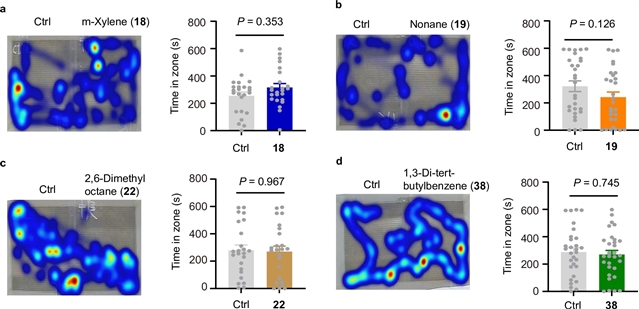
近日,中国科学院动物研究所康乐及其小组揭示了蝗虫4-乙烯基苯醚生物合成及关键酶的解码。相关论文发表在2025年6月25日出版的《自然》杂志上。
在这里,研究组分析了4VA的生物合成和当4VA生物合成途径中的酶被操纵时蝗虫的行为反应。该过程首先从食用植物中提取苯丙氨酸,然后通过三种前体:肉桂酸、对羟基肉桂酸和4-乙烯基酚(4VP)。值得注意的是,通过甲基化从4VP到4VA的转化是群居植物特有的。这一步骤由两个关键的甲基转移酶4VPMT1和4VPMT2催化。根据4VPMT2与4VP和S-腺苷-l-蛋氨酸结合的X射线共晶结构,课题组研究人员开发了4-硝基苯酚作为底物替代物。课题组发现了几种化学物质,它们可以通过抑制4VPMT蛋白的酶活性来阻断4VA的产生,从而抑制它们的聚集行为。这些发现揭示了4VA生物合成背后的化学逻辑,并确定了两种关键酶作为蝗虫群管理的新靶点。
据介绍,聚落信息素,4-乙烯基苯醚(4VA),是群居迁徙蝗虫特异性释放的信息素,在形成蝗虫群以消灭破坏性瘟疫中起着至关重要的作用。控制蝗灾在很大程度上依赖于化学农药的广泛使用,这导致了严重的环境和健康问题。由于信息素是昆虫交流和行为的主要媒介,探索它们的生物合成可以为开发创新的行为调节剂提供重要线索,从而有可能减少对化学农药的依赖。
附:英文原文
Title: Decoding 4-vinylanisole biosynthesis and pivotal enzymes in locusts
Author: Guo, Xiaojiao, Gao, Lei, Li, Shiwei, Gao, Jing, Wang, Yuanyuan, Lv, Jing, Wei, Jiayi, Yang, Jing, Ke, Han, Ding, Qi, Yang, Jun, Guo, Fusheng, Zhang, Haowen, Lei, Xiaoguang, Kang, Le
Issue&Volume: 2025-06-25
Abstract: Aggregation pheromone, 4-vinylanisole (4VA), is specifically released by gregarious migratory locusts, and is crucial in forming locust swarms that cause destructive plagues1. Control of locust plagues relies heavily on the extensive application of chemical pesticides, which has led to severe environmental and health issues2. As pheromones are primary mediators of insect communication and behaviour3, exploring their biosynthesis can provide important cues to develop innovative behavioural regulators, potentially reducing the reliance on chemical pesticides. Here we resolve the biosynthesis of 4VA and behavioural responses of locusts when enzymes in the 4VA biosynthetic pathway are manipulated. The process initiates with phenylalanine derived from food plants and proceeds through three precursors: cinnamic acid, p-hydroxycinnamic acid and 4-vinylphenol (4VP). Notably, the conversion from 4VP to 4VA through methylation is unique to gregarious locusts. This step is catalysed by two crucial methyltransferases, 4VPMT1 and 4VPMT2. Guided by the X-ray co-crystal structure of 4VPMT2 bound with 4VP and S-adenosyl-l-methionine, we developed 4-nitrophenol as a substrate surrogate. We identified several chemicals that can block 4VA production by inhibiting the enzymatic activities of 4VPMT proteins, thereby suppressing locust aggregative behaviour. The findings uncover the chemical logic behind 4VA biosynthesis and pinpoint two crucial enzymes as novel targets for locust swarm management.
DOI: 10.1038/s41586-025-09110-y
Source: https://www.nature.com/articles/s41586-025-09110-y
Nature:《自然》,创刊于1869年。隶属于施普林格·自然出版集团,最新IF:69.504
官方网址:http://www.nature.com/
投稿链接:http://www.nature.com/authors/submit_manuscript.html
